Photos show how being LGBTQ+ in the US military has changed
The fight for LGBTQ+ equality in the military has spanned decades.
"Don't ask, don't tell" forced LGBTQ+ service members to remain closeted. It was repealed in 2010.
Trump banned transgender individuals from serving in the military in 2017, but Biden overturned it.
LGBTQ+ individuals in the US have fought for equality in all areas of their lives, including the opportunity to serve their country in the military.
Even though the "blue discharges" of World War II and the "don't ask, don't tell" policy of the 1990s are things of the past, LGBTQ+ service members still face hurdles despite the progress of the last few decades.
This Pride Month, here's a look back at how being LGBTQ+ in the US military has changed through the years.
During World War II, homosexuality was considered a mental illness that disqualified soldiers from serving in the US military.
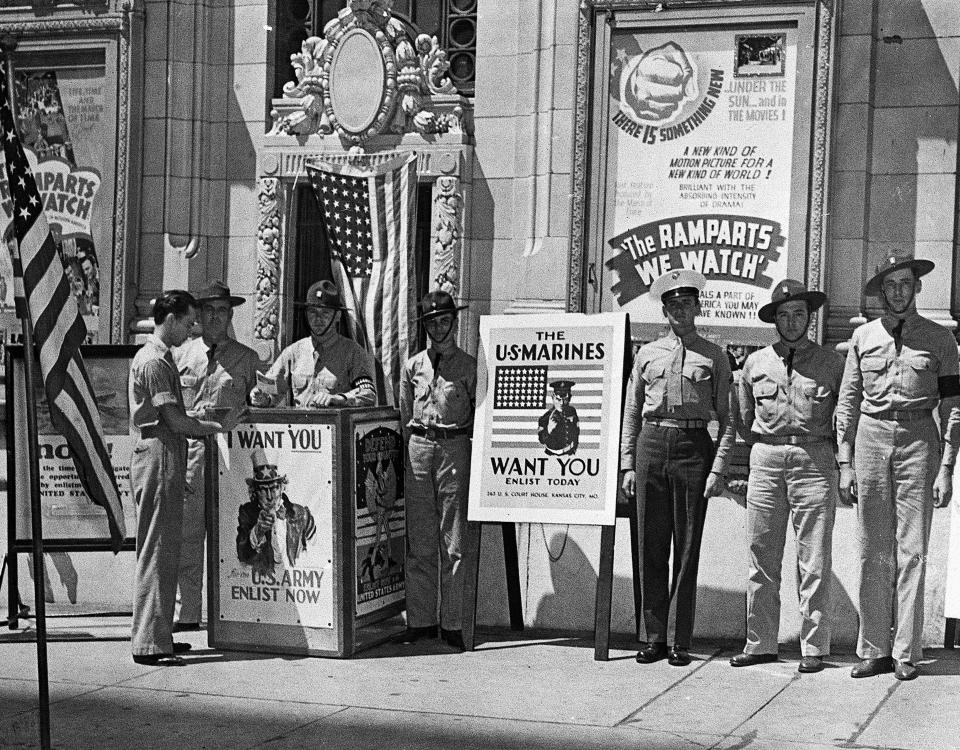
New recruits were asked about their sexual orientation upon enlisting in the military, forcing potential service members to lie or answer vaguely if they identified as LGBTQ+.
Soldiers who were outed during their service were given "blue discharges" that labeled them as having "undesirable habits and traits of character," according to the National Park Service. The discharge records were public, which made it difficult for former service members expelled for their sexuality to find work.
Sergeant Leonard Matlovich, who was discharged from the Air Force for being gay, appeared on the cover of Time magazine in 1975 to share his story.
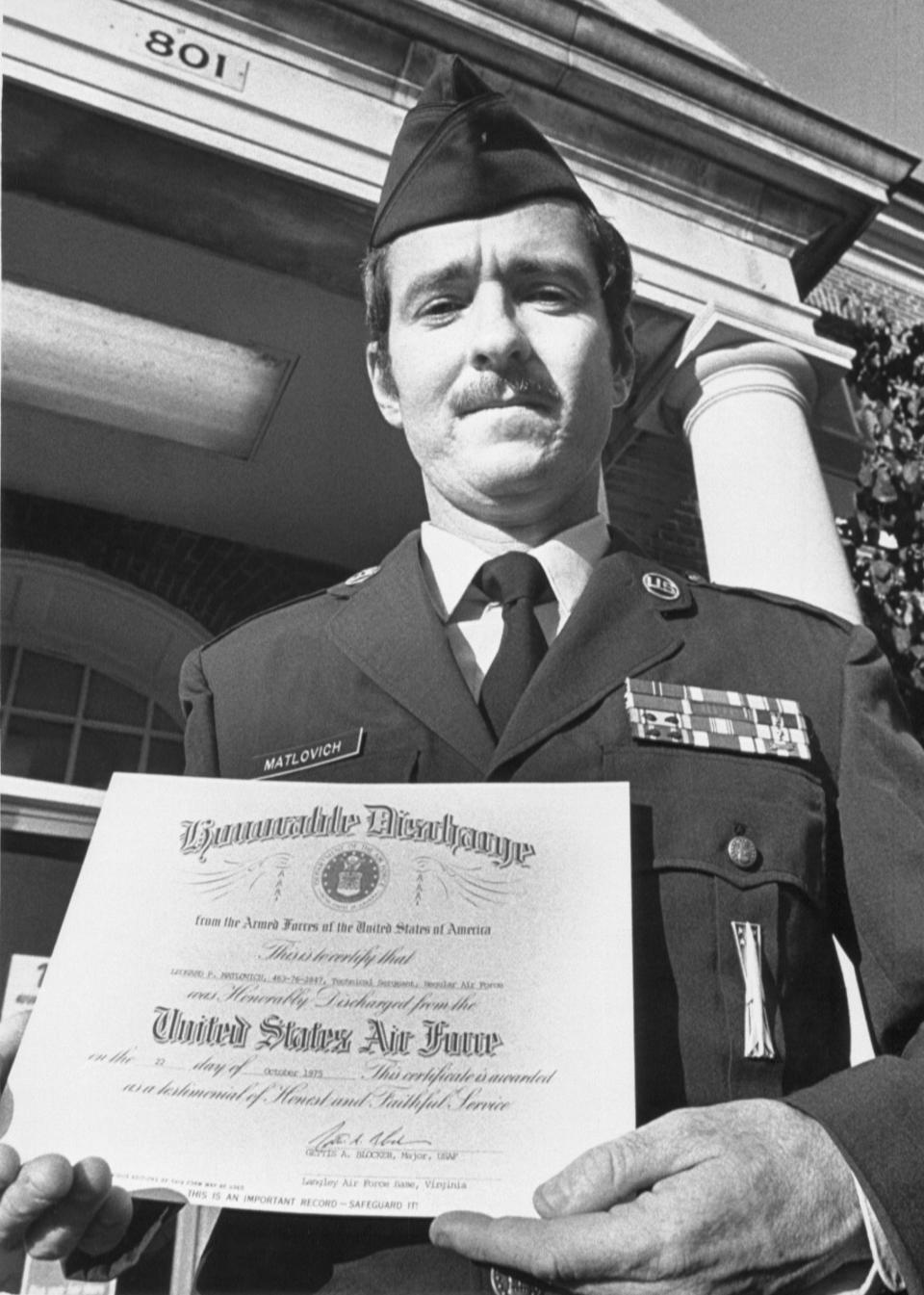
The Stonewall Inn uprising of 1969, in which patrons at an LGBTQ+ bar fought back against a police raid, sparked nationwide awareness of the LGBTQ+ rights movement.
Matlovich, who served in Vietnam and was awarded a Purple Heart and Bronze Star, appeared on the Time magazine cover in uniform with the headline "'I Am a Homosexual:' The Gay Drive for Acceptance." He became a lifelong advocate for LGBTQ+ rights until his death at age 44.
Matlovich was buried in the Congressional Cemetery in Washington, DC. His tombstone reads: "When I was in the military they gave me a medal for killing two men and a discharge for loving one."
Gilbert Baker, a former Army medic, created the first rainbow flag in 1978.
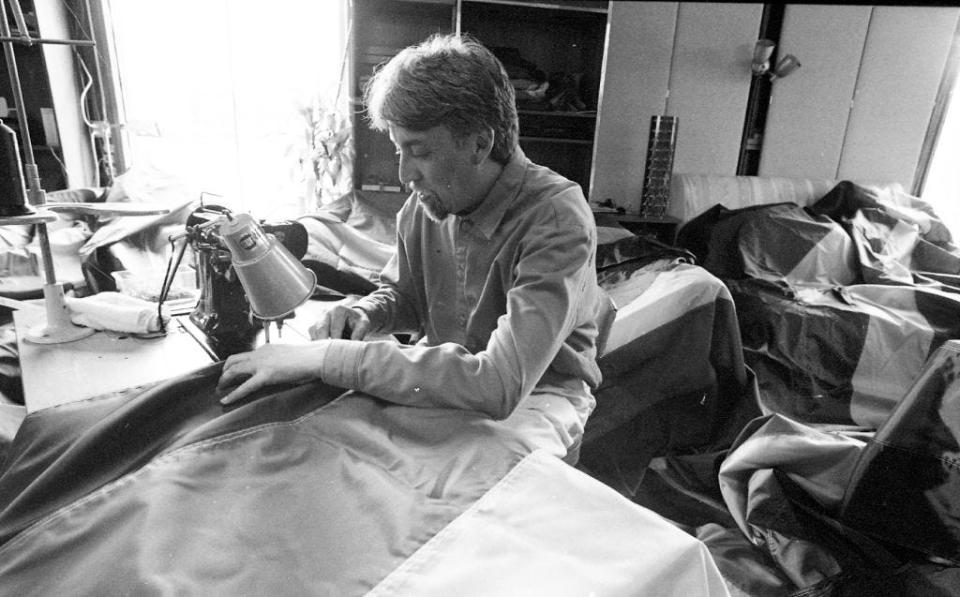
After experiencing homophobic threats and harassment in basic training, Gilbert Baker switched to medic training and served for two years in California hospitals, according to the National Park Service. He kept his sexuality hidden for the rest of his military career and was honorably discharged in 1972.
After his military service, he volunteered at the San Francisco Gay Community Center and used his artistic skills to create banners for gay liberation marches.
In 1978, he sewed the first rainbow flags for the Gay Freedom Day Parade in San Francisco. Rainbow flags went on to become a symbol of LGBTQ+ pride and protest.
"We all felt that we needed something that was positive, that celebrated our love," Baker said of the rainbow design.
Between 1980 and 1990, around 17,000 service members were discharged from the military due to their sexual orientation.

In 1992, the US General Accounting Office found that it cost $28,266 to replace each member and $120,722 to replace each officer who had been discharged due to their sexual orientation, according to a report cited by the Congressional Research Service.
Also that year, Col. Margarethe Cammermeyer (pictured) was discharged after 23 years of service after revealing she was a lesbian. A judge later ruled her discharge unconstitutional and she returned to the National Guard until she retired in 1997.
In the 1990s, organizations like the Gay Veterans Association advocated for equality in the US military.

Members of the Gay Veterans Association demonstrated outside the White House during a gay rights march in 1993.
President Bill Clinton enacted the military's "don't ask, don't tell" policy in 1993.
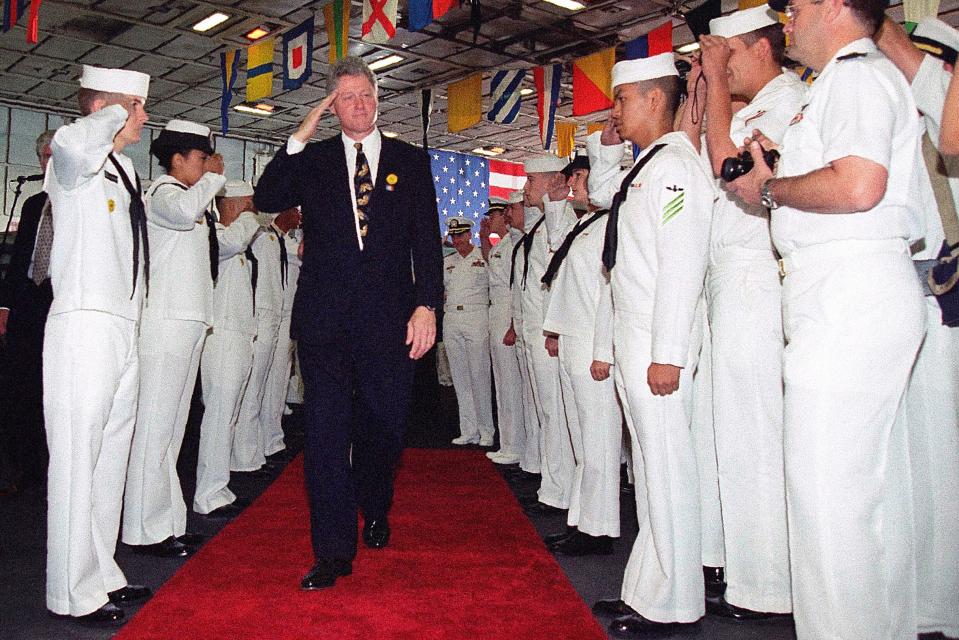
Clinton pledged to allow gay and lesbian service members to serve openly in the military during his presidential campaign, but he was unable to deliver on his promise due to opposition from Congress and the Joint Chiefs of Staff. Instead, he brokered a compromise in which service members would not be asked about their sexual orientation, but could be discharged if they disclosed it.
In his remarks announcing the change, Clinton said that the policy was "not a perfect solution," but called it a "major step forward."
"It is an honorable compromise that advances the cause of people who are called to serve our country by their patriotism, the cause of our national security, and our national interest in resolving an issue that has divided our military and our nation and diverted our attention from other matters for too long," he said.
"Don't ask, don't tell" remained controversial.
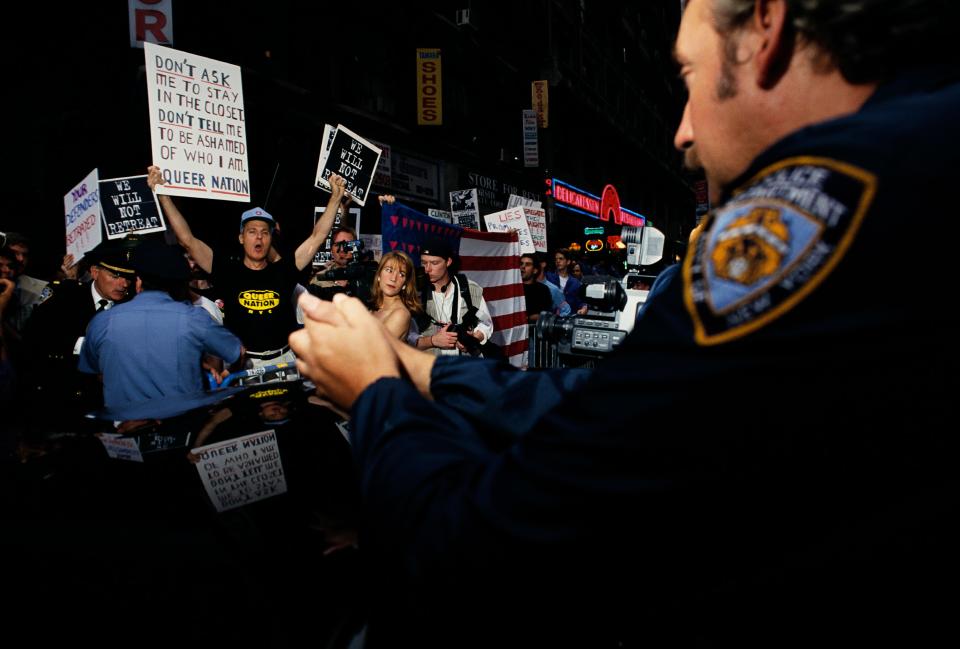
"Don't ask, don't tell" allowed LGBTQ+ individuals to serve in the military on the condition that they remained closeted. LGBTQ+ rights advocates pushed to end the policy, saying it still treated LGBTQ+ soldiers as second-class citizens and resulted in suspicion and harassment, Time magazine reported.
In 2009, the Servicemembers Legal Defense Network found that 13,000 lesbian, gay, and bisexual soldiers had been discharged since "don't ask, don't tell" was enacted, costing $200 million to replace them, CNN reported.
In 2010, President Barack Obama signed legislation repealing "don't ask, don't tell."
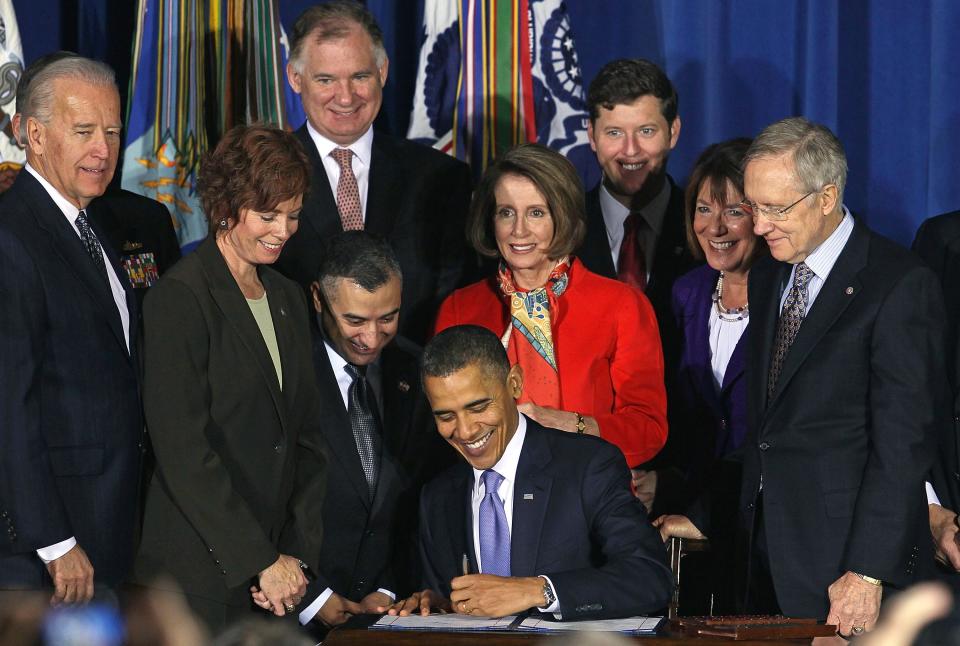
Obama pledged to repeal "don't ask, don't tell" during his 2008 presidential campaign and signed the legislation doing so on December 22, 2010.
"No longer will tens of thousands of Americans in uniform be asked to live a lie," he said. "I believe this is the right thing to do for our military. It's the right thing to do, period."
The Department of Defense hosted its first Pride Month event in 2012.
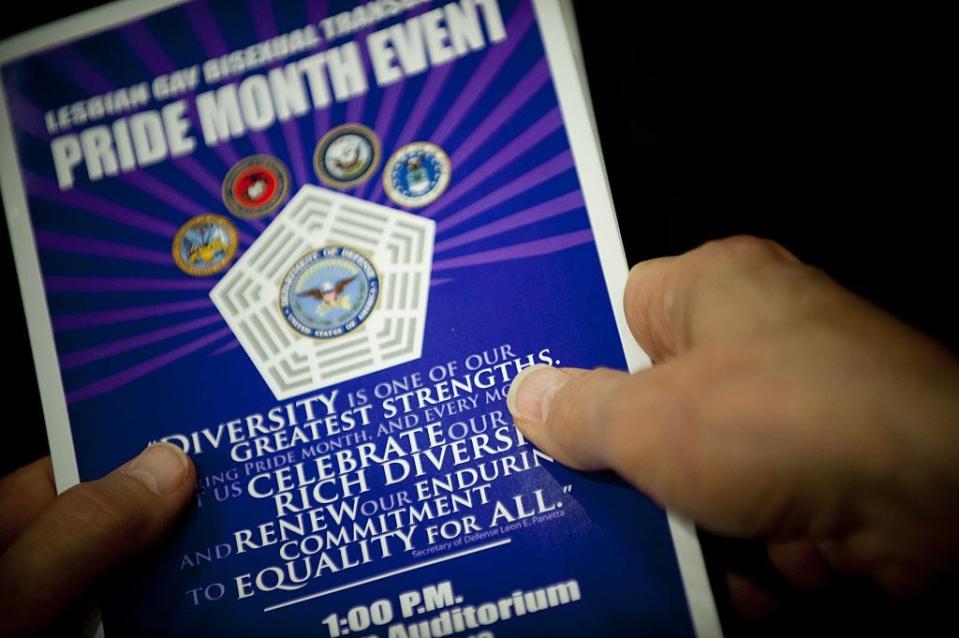
The event featured video messages from Obama and then-Secretary of Defense Leon Panetta, a keynote speech by then-Department of Defense General Counsel Jeh Johnson, and a panel titled, "The Value of Open Service and Diversity," according to the Obama White House's official website.
In 2013, same-sex military spouses became eligible for benefits provided by the Department of Defense.

Section 3 of the Defense of Marriage Act stated that federal marriage benefits only applied to heterosexual couples, even if individual states recognized their marriages. For LGBTQ+ service members such as Lieutenant Colonel Shannon McLaughlin (pictured above, second from right), that meant that her wife, Casey McLaughlin (left), could not receive military spouse benefits.
In June 2013, the Supreme Court ruled that Section 3 of the Defense of Marriage Act was unconstitutional, allowing same-sex spouses to receive military benefits such as housing, healthcare, and burial at Arlington National Cemetery.
Marriage equality became the law of the land in the US in 2015.
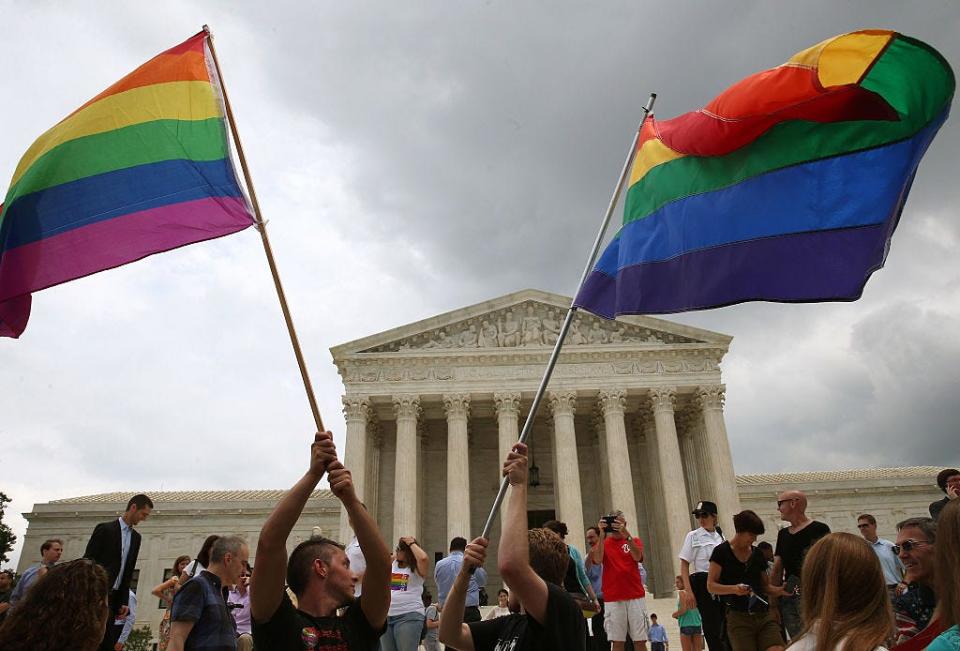
On June 26, 2015, the Supreme Court legalized same-sex marriage in all 50 states, citing the Fourteenth Amendment's guarantee of "equal protection under the law."
"As the state itself makes marriage all the more precious by the significance it attaches to it, exclusion from that status has the effect of teaching that gays and lesbians are unequal in important respects," Justice Anthony Kennedy wrote in the majority opinion.
In 2016, the Pentagon announced it would no longer ban transgender individuals from serving openly in the military.
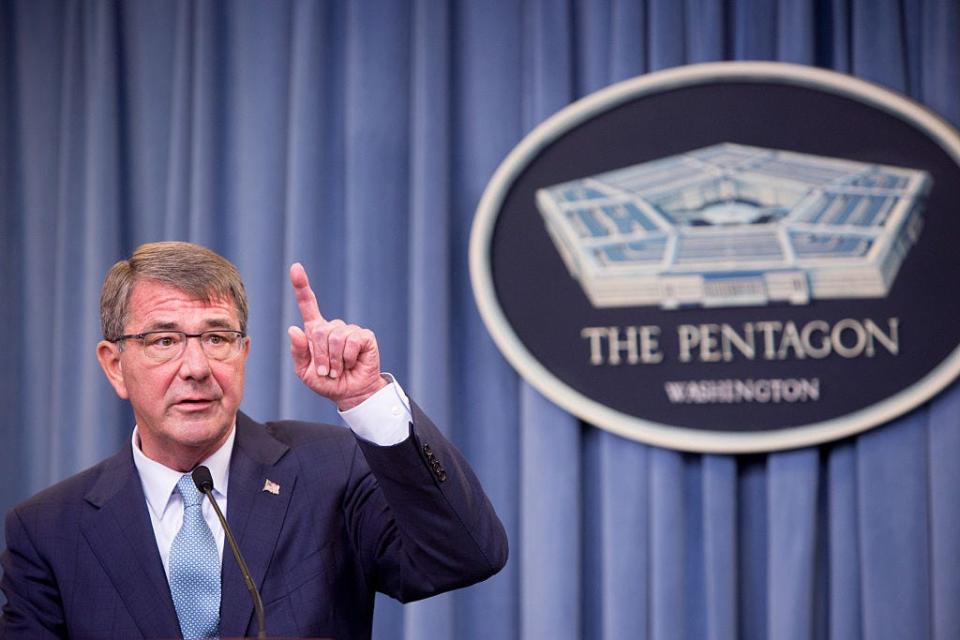
Defense Secretary Ash Carter outlined a policy in which transgender service members would be able to receive medical care related to their transition and change their gender identification without being discharged or denied reenlistment.
"Americans who want to serve and can meet our standards should be afforded the opportunity to compete to do so," Carter said.
In 2017, President Donald Trump surprised officials when he announced a ban on transgender people serving in the military, which then went into effect in 2019.
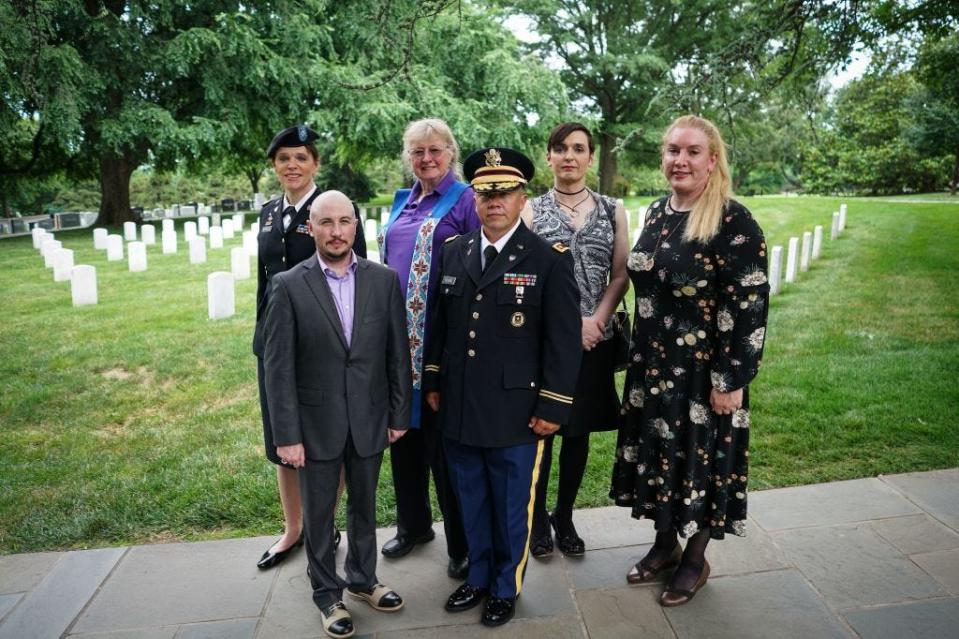
"After consultation with my Generals and military experts, please be advised that the United States Government will not accept or allow transgender individuals to serve in any capacity in the US Military," Trump wrote on X, formerly known as Twitter, citing "tremendous medical costs and disruption" as the reason for the reversal.
BBC News reported that the Pentagon was surprised by Trump's announcement, with then-Defense Secretary James Mattis only finding out about it after Trump published his statement on X.
When the policy went into effect in 2019, it allowed transgender troops who had already been diagnosed with gender dysphoria to continue serving in the military, but did not allow transgender individuals to enlist.
President Joe Biden overturned Trump's ban and appointed transgender military officer Rachel Levine as assistant health secretary in 2021.

Days after his inauguration, Biden signed an executive order overturning Trump's ban on transgender troops, stating that "all Americans who are qualified to serve in the Armed Forces of the United States should be able to serve."
In addition, Biden appointed Rachel Levine, a trans woman, as assistant secretary of health, making her the highest-ranking openly trans person in the federal government and the first openly trans person to be confirmed by the Senate.
In October 2021, Levine was sworn in as a four-star admiral in the US Public Health Service Commissioned Corps — the first woman and openly trans person to hold the rank in US history.
That same year, a Navy ship was named after the LGBTQ+ rights activist and politician Harvey Milk.
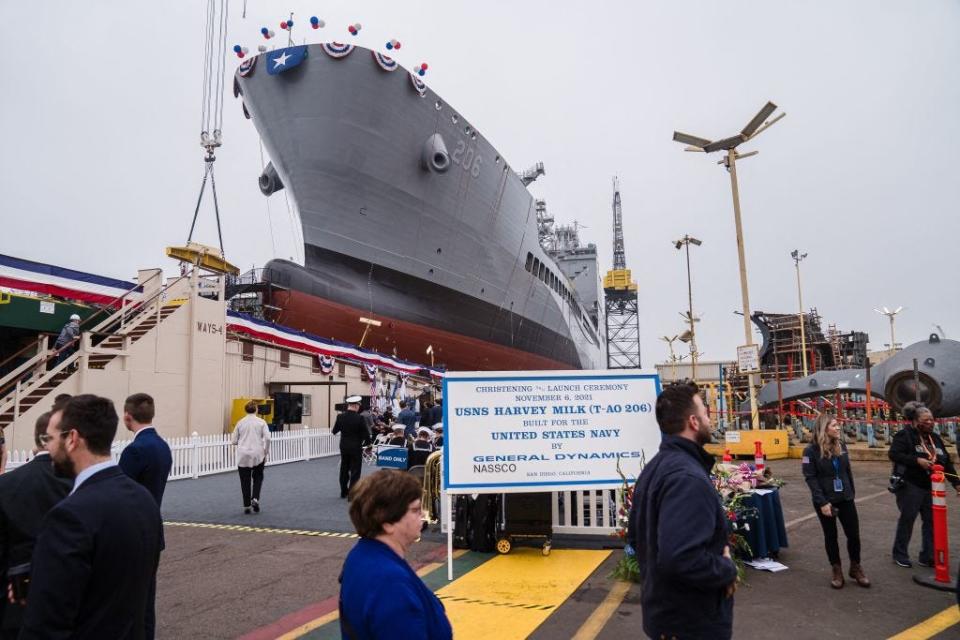
Milk, who was discharged from the Navy due to his sexuality, was one of the first openly gay politicians in the US. He was elected to the San Francisco Board of Supervisors in 1977 and assassinated in 1978.
"For far too long, sailors like Lt. Milk were forced into the shadows or, worse yet, forced out of our beloved Navy," Navy Secretary Carlos Del Toro said at the launch of the USNS Harvey Milk. "That injustice is part of our Navy history, but so is the perseverance of all who continue to serve in the face of injustice."
LGBTQ+ members of the US military still face discrimination despite enormous progress.

Despite progress through new policies, LGBTQ+ service members still encounter stigmas and discrimination due to their sexuality.
A 2020 study published in The Journal of Traumatic Stress found that over 80% of LGBTQ+ active-military service members said they have been sexually harassed during their service. LGBTQ+ veterans are also more likely to experience economic insecurity, housing instability, and mental health concerns than non-LGBTQ+ veterans, according to a 2022 analysis conducted by the Center for American Progress.
Organizations like the Modern Military Association of America continue to advocate for LGBTQ+ service members, providing resources and support as well as opportunities to march with a rainbow flag during Pride Month.
Read the original article on Business Insider


